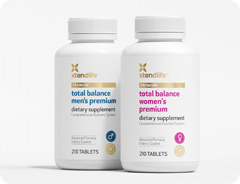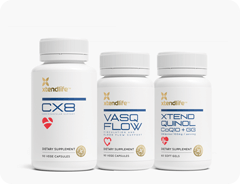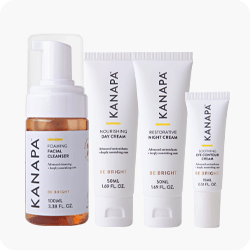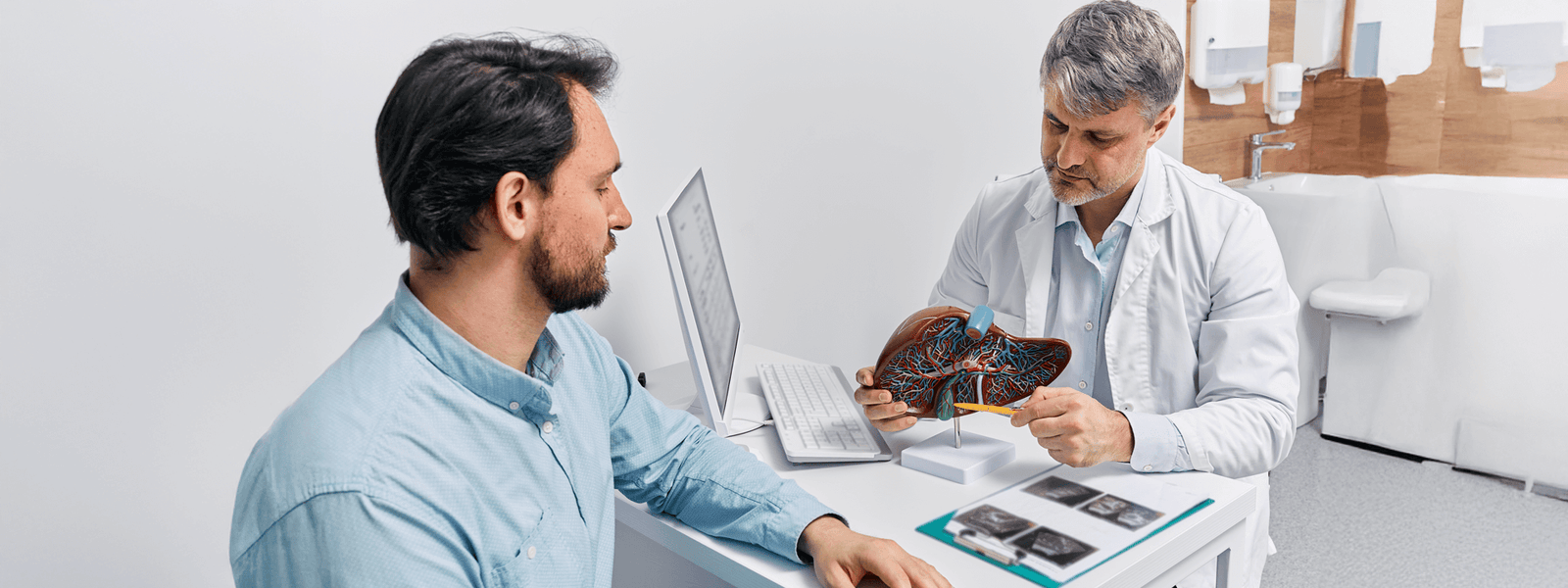Vitamin D has been getting a lot of press lately, touted as a kind of super-nutrient with the ability to boost mood, keep us youthful and even prevent cancer. We know we get it from sunlight, but what does the ‘sunshine vitamin’ actually do and how do we ensure we are getting enough?
Benefits From Top to Toe
Vitamin D fulfills a myriad of functions within the body, including:
- Strong bones and teeth – We need vitamin D to absorb calcium and phosphorous and build strong teeth and bones. When vitamin D intake is inadequate, there will be poor bone mineralization or even, demineralization. In children, the serious form of vitamin D deficiency is rickets: bowed legs and knocked knees due to poor bone mineralization. Adults can develop osteomalacia, a precursor to osteoporosis, where bones become softened and prone to breakage.
- Immune function – Vitamin D is essential for a strong immune system, helping fight colds and flu, and even cancer. Studies comparing geographic location with cancer prevalence have consistently demonstrated a positive correlation between distance from the equator (and therefore reduced sunlight hours) and cancer prevalence. Bowel, breast, prostate, and lymphatic cancers seem to be particularly linked to vitamin D levels.[1] Coincidence maybe, but cancer survival rates seem to be lower when the diagnosis is made during the winter rather than the summer months. Experts aren’t yet sure exactly how vitamin D prevents cancer; however, it is believed to promote cell differentiation and apoptosis (programmed cell death)[2].
- Preventing auto-immune disease - Vitamin D deficiency has been strongly implicated in the development of autoimmune diseases, from multiple sclerosis and rheumatoid arthritis to inflammatory bowel disease and Type 1 diabetes. Studies have consistently identified a link between latitude and MS prevalence[3][4] – the disease appears to be much more common in nations nearest the poles and farthest from the equator.
- Happiness and mood – Feel most alive after a day at the beach or walk in the sun? You’re not alone. Vitamin D plays an integral role in a range of cognitive functions including thinking, memory, and mood. Seasonal depression is a recognized medical condition, believed to be due to an imbalance in neurotransmitters from lack of sunlight.
- Fighting aging - A potent antioxidant, vitamin D helps maintain healthy skin and prevent aging. It may be beneficial in the management of certain skin conditions such as psoriasis and eczema.
In the Dark
Given vitamin D’s super status, you would think it is something we would all want in bucket loads. The reality is, that many people are seriously deficient. An estimated 50% of people may be deficient, with the elderly and convalescent most at risk[5]. Dark-skinned people may also be at risk as the skin pigment melanin acts as a kind of natural sunscreen, meaning darker-skinned people require longer periods in the sun to absorb the same amount of vitamin D.
Vitamin D deficiency has increased significantly in the last few years, largely due to the well-meaning “sun-safe” message. In an attempt to prevent skin cancer and premature aging, many people never step outdoors without sunscreen and full clothing – increasing the risk of vitamin D deficiency. Vitamin D cannot be absorbed while wearing sunscreen[6]. While sun protection is essential to prevent melanoma skin cancer, it is important to balance this with enough sun exposure to meet our vitamin D needs.
So Just How Much Vitamin D Do We Need?
The current international Recommended Daily Intake (RDI) for vitamin D is 200 IU, however, there have been calls to significantly increase this due to the vitamin’s critical role in cancer prevention, immune system regulation, and bone health.
The Institute of Medicine recommends up to 600IU for children and adults in the U.S. and Canada[7]. In a report, the Institute also recognized the safety of increasing the upper limit of vitamin D to 2,000 to 4,000IU per day and acknowledged that even at 4,000 IU per day, there was no good evidence of harm.
How Do We Get It?
You can get small amounts of vitamin D from certain foods (mackerel, eggs, tuna, dairy products, salmon, and if you can stomach it, organic liver) but sunlight is always the best source. Experts recommend 15-30 minutes a day in full sunlight with legs, arms, and face exposed for normal vitamin D levels. This is easy to achieve in summer, however, winter makes it a little more difficult.
Fortunately, vitamin D is fat-soluble, meaning it can be stored in the fat tissue of the body. This means that in the summer when we are naturally outdoors more, we can build up vitamin D stores to get us through the winter. Vitamin D absorbed from sunlight is a self-regulating mechanism, meaning you can never overdose. However, this does not mean you should spend hours in the sun unprotected – you can still get sunburnt after 15-30 minutes.
If you are really struggling to get outside each day, vitamin D supplements are an option. Xtendlife’s Total Balance range is a complete nutrient system. It includes over 80 ingredients of essential vitamins, minerals, antioxidants as well as vitamin D. The Adult version includes 500IU and the children’s 220IU of vitamin D (cholecalciferol) Compared with vitamin D2 (ergocalciferol), vitamin D3 (cholecalciferol) is the active form, so this is a much better choice – It may be as much as three times more potent than vitamin D2!
Those who want added support for osteoporosis and bone health can also combine our Bone-Support with Total Balance.
References:
[1] Laino, C. Low Vitamin D Levels Linked to advanced Cancers. WebMD. September 2011.[2] Deeb, K. Trump, D. and Johnson, C. Vitamin D signalling pathways in cancer: potential for anticancer therapeutics. Departments of Pharmacology and Therapeutics and Medicine, Roswell Park Cancer Institute, Buffalo, New York, Nature: September 2007, Vol 7.
[3] Bäärnheim, M., Hedström, AK., Kockrum, I., Sundqvist, E., Gustaafsson, SA and Hillert J. Sunlight is associated with decreased multiple sclerosis risk: no interaction with human leukocyte antigen. Eur J Neurol. 2012; 19:955 – 962.
[4] Simpson, S., Blizzard, L. Otahal, P. Van der Mei, L, Taylor, B. Latitude is significantly associated with the prevalence of multiple sclerosis: A meta-analysis. J Neurol Neurosurg Psychiatry. 2011; 82:1132-1141.
[5] Nair, R. and Maseeh, A. Vitamin D: The “sunshine” vitamin. J Pharmacol Pharmacother. 2012 Apr-Jun; 3(2): 118–126.
[6] Holick MF. Vitamin D: importance in the prevention of cancers, type 1 diabetes, heart disease, and osteoporosis. Am J Clin Nutr. 2004; 79:362-71.
[7] Institute of Medicine. Dietary Reference Intakes for Calcium and Vitamin D. Washington, D.C.: National Academies Press, 2010.


 Supplements
Supplements Superfoods
Superfoods Bundles
Bundles



















